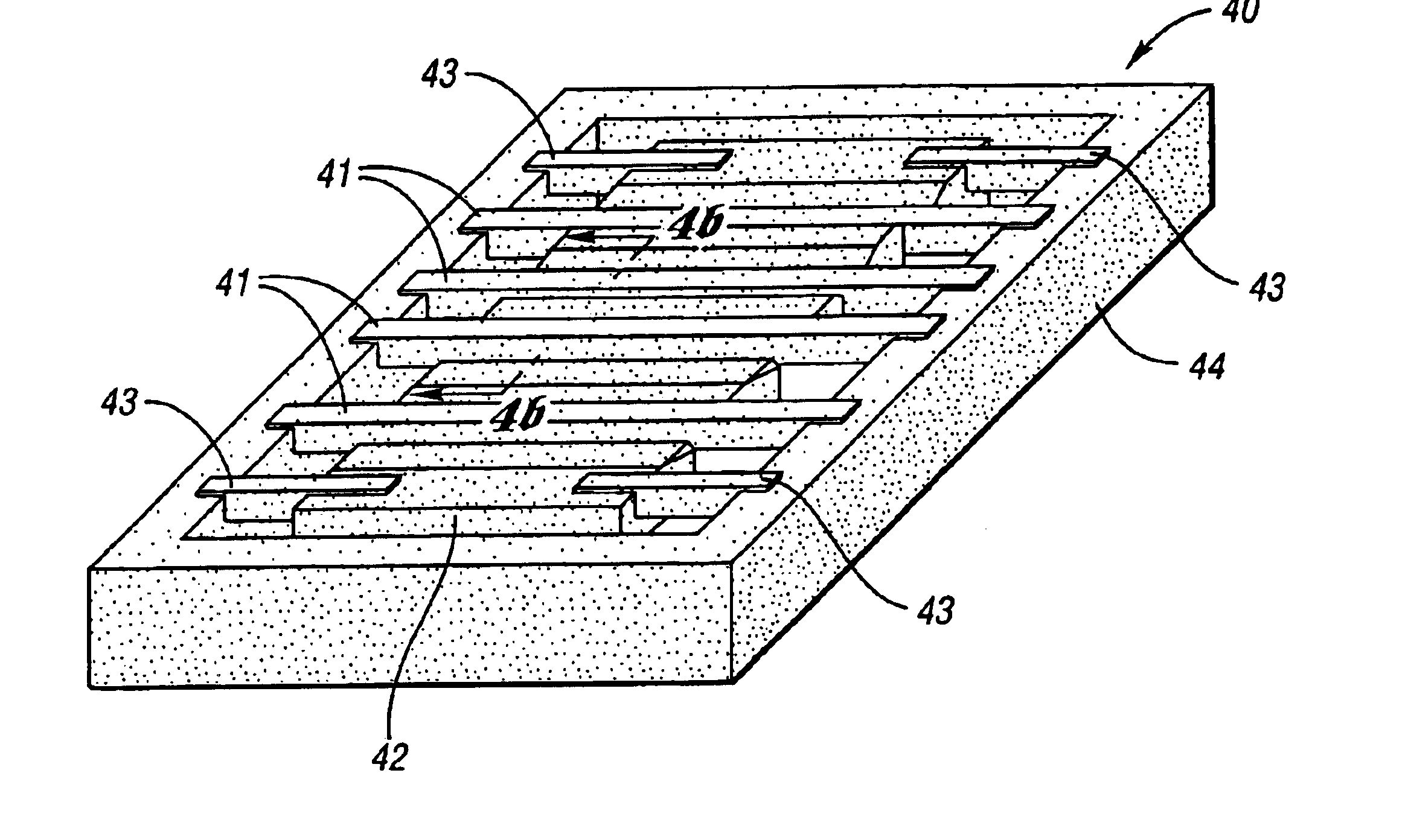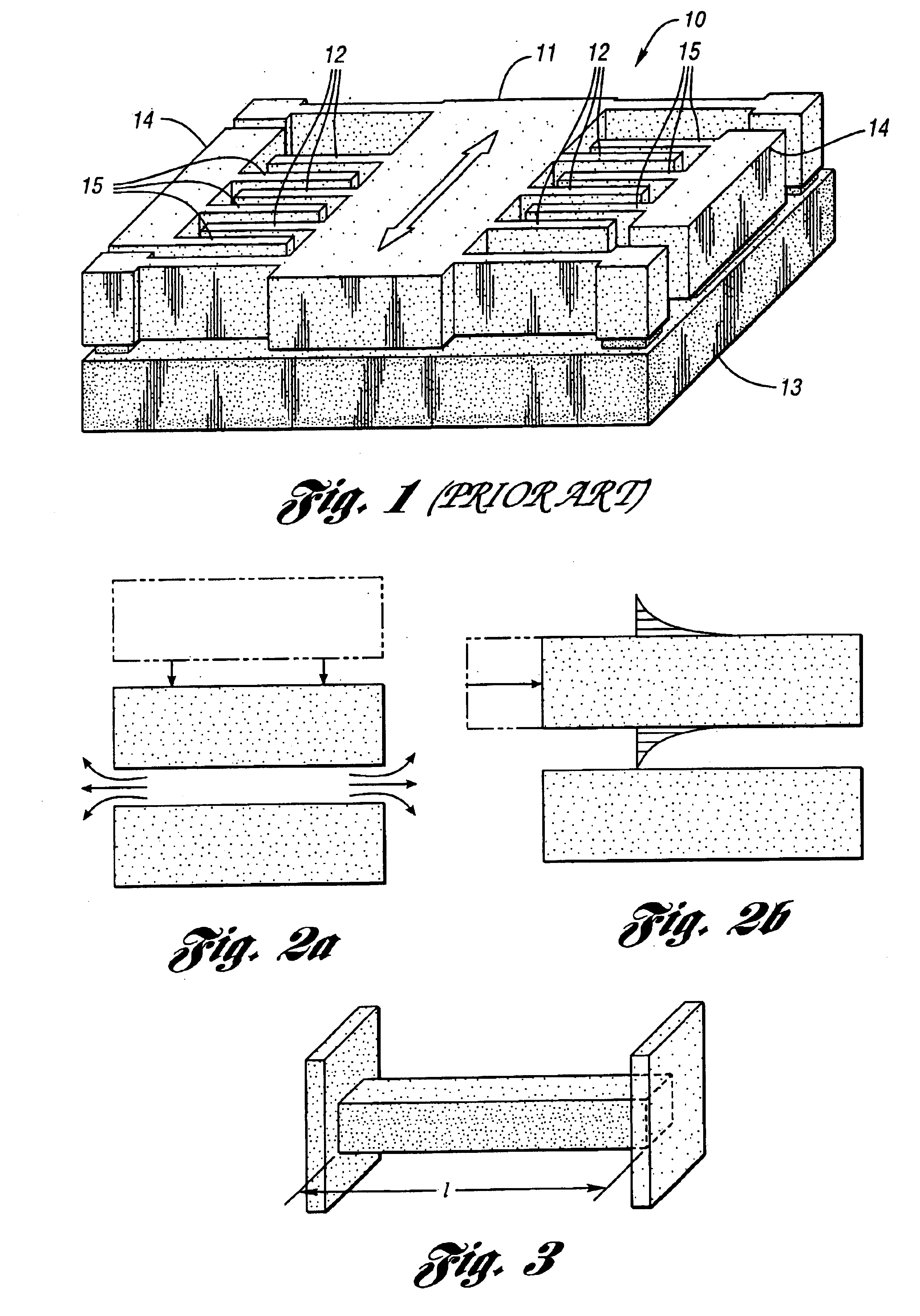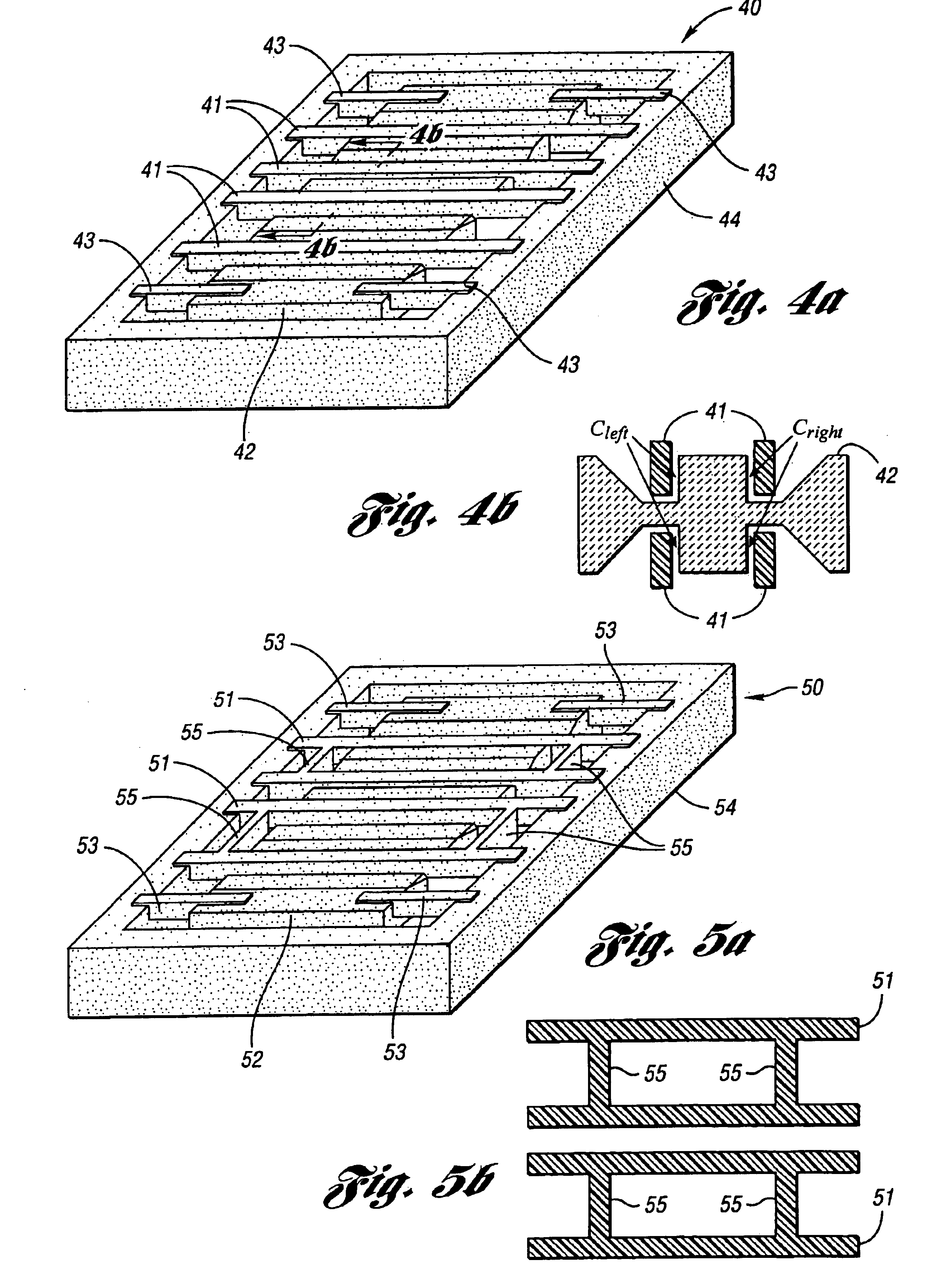Micromachined capacitive lateral accelerometer device and monolithic, three-axis accelerometer having same
a capacitive lateral accelerometer and micromachined technology, applied in the direction of acceleration measurement in multiple dimensions, acceleration measurement using interia forces, instruments, etc., can solve the problem of low ratio of sensing gap and height of sense electrodes of lateral devices, cantilever-type configuration does not provide adequate stiffness, and has not been implemented with lateral devices.
- Summary
- Abstract
- Description
- Claims
- Application Information
AI Technical Summary
Benefits of technology
Problems solved by technology
Method used
Image
Examples
Embodiment Construction
[0111]Briefly, what is disclosed herein is a micromachined in-plane (lateral) accelerometer which utilizes a combined surface and bulk micromachining technology. Several novel features are introduced which are incorporated with a sensor structure as well as approaches to achieve a high-sensitivity, low-noise micromachined accelerometer.
A. In-plane Acceleration Sensor Structure
[0112]a. A new sense and drive electrode configuration[0113]Proofmass itself forms one plate of the parallel-plate capacitor,[0114]Stiff electrodes using a bridge configuration for a stable operation,[0115]b. A novel combined surface and bulk micromachining technology to implement the new sensor structure and electrode configuration[0116]One side of the sense / drive electrode is protected whereas the other side of it is removed at the end of the fabrication using the combined technology,[0117]c. A three-axis single-chip accelerometer[0118]Using the combined technology, a monolithic, three-axis accelerometer was ...
PUM
 Login to View More
Login to View More Abstract
Description
Claims
Application Information
 Login to View More
Login to View More - R&D
- Intellectual Property
- Life Sciences
- Materials
- Tech Scout
- Unparalleled Data Quality
- Higher Quality Content
- 60% Fewer Hallucinations
Browse by: Latest US Patents, China's latest patents, Technical Efficacy Thesaurus, Application Domain, Technology Topic, Popular Technical Reports.
© 2025 PatSnap. All rights reserved.Legal|Privacy policy|Modern Slavery Act Transparency Statement|Sitemap|About US| Contact US: help@patsnap.com



